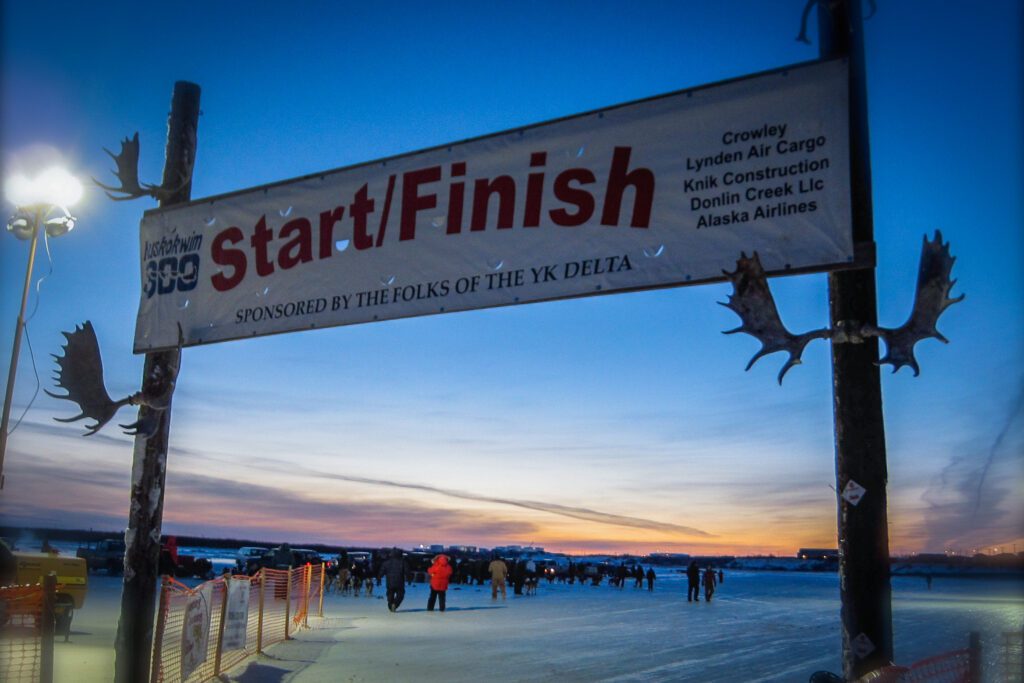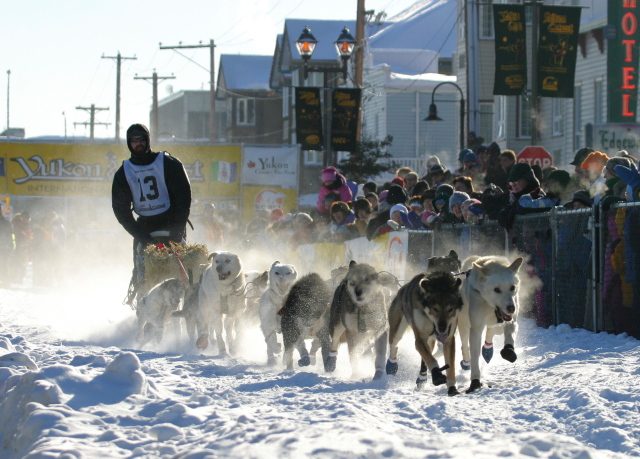Out of Fairbanks, through Nenana, and on to Manley Hot Springs before a long stretch of running on the river — that was the first day of this year’s Iditarod.
KNOM’s Matthew Smith is following mushers along the trail and spoke with one western Alaska musher who gets the whole family involved with his Iditarod sendoff.
Linnea Baker Burmeister steps out of her car and walks over to her son Noah, who’s helping his older brother Aaron Burmeister load up his sled for the start of the Iditarod.
“Just takes a lot of effort, everybody’s got to pitch in and help where they can,” he says.
It’s Burmeister’s 16th Iditarod, and this year the race started near his Interior training grounds of Nenana and ends in his hometown of Nome. He says that makes this year special — but his mom Linnea says mushing has always been special for her son.
“I was running him on a two dog sled when he was a year old,” laughs Linnea. “He stood on the bed and hung on. He’s never been off a sled since, it went from two dogs to three dogs…to eighteen or whatever we had out there running.”
For Aaron, no one in the family is spared from the prep work. Not even 6-year-old Hunter, who was doing his part to put Burmesiter’s new sled — a custom-built rig made for him by a Norwegian sled builder.
“It has a caboose in the back to hold stuff,” says Hunter.
That caboose — a detachable trailer that carries straw or food, a recovering dog, and can even be dropped if necessary — is increasingly part of mushers’s sleds this year. Hunter says it gets him excited. He hopes this will be his dad’s year to “win the Iditarod.”
But it’ll take more than just a new sled. Burmeister and more than 70 teams bolted out of Fairbanks hoping they have the team, the training, the strategy — and, yes, the sled — to be the first across the finish line in Nome. But still lingering in the dog lot after those teams had hit the trail, was the last man to win the race from a Fairbanks restart: Robert Sorlie. He says even winning runs have to be more than great. They have to be perfect.
“It was my lucky year that year,” says Sorlie of his 2003 winning run, “It was perfect. Everything was perfect. To do a really good run, everything has to be perfect all the time, I think.”
Meanwhile, sixty miles downriver, mushers were passing through the Nenana checkpoint, with the majority stopping just a few yards away from the checkpoint itself. Martin Buser led the way, followed by Norwegian rookie Thomas Waerner, who shares a Kennel with Sorlie.
Allen Moore was replacing booties on his puppy team — and says the trail, so far, looks promising.
Handlers, many of whom drove down from Fairbanks, were there to help where they could. By Monday afternoon dozens of dog teams were clustered within viewing distance of the Nenana Ice Classic tripod. But many teams — like Bethel’s Pete Kaiser, Aliy Zirkle, and more — chose to camp alone, further downriver, away from the growing crowd.
By nightfall most mushers had hit the trail again, as they make their way overland toward Manley Hot Springs, before rejoining the river for long stretches of the race. It’s a path that eventually leads to the Norton Sound coast, then to Nome — and it’s one Linnea Baker Burmeister hopes will lend mushers like her son a little company.
“So often when you’re out on the trail, there will be a raven flying not far,” she says. “I would think it’s an omen. I’ve always thought that way. A positive one [of] support, kind of keeping an eye on whats going on.”







